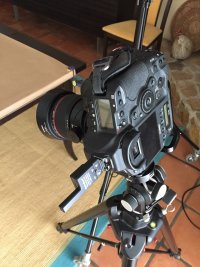If you have two fresh batteries in the grip and shoot 500 frames over a couple of hours, each battery will have roughly 250 shots showing on its count.
I would actually prefer option that you can choose to run one battery first down to ~10% and then switch on the other one. That way I could better manage batteries during long events.
So e.g. I start with batteries A and B. After 500 shots A is down to 10% and it switches to using B (maybe notify somewhere in screen about this). Then at some convenient break at events I could pop out A, slap it in charger and add C in that slot. Then 500 pics later B is at 10% and camera switches to battery C. Again at some point I can now drop B to charge and put A back in.
Should be easy to make SW option to do that, since they already support selecting one at a time.
Although (thinking with my limited power knowledge), I would design the system to physically mate both batteries so they would always work in parallel. That would minimize current per battery, thus minimize losses and heat. If you yank higher currents from each battery at a time, it'll both heat it up more and also incur more losses on the traces (loss is linear with current draw). So it makes sense to always split the current between the batteries.
So the numbers acting like mentioned above, might be just technical eenie meenie miney mo counting and not actual usage. Since it swaps the battery between bursts, would be easy to try. Set JPEG and shoot >1000 burst on large/fast card so it doesn't fill the buffer. After the burst, pop out the batteries and measure voltage. If one of them is clearly reduced, then it did actually only use one. If they both are at same level, then it was using both even when reports one.
And bit more crazy thoughts, they should actually put the 2 in series. Some lenses seem to benefit from higher voltage to provide faster AF, and higher voltage = less current, which means less trace losses. Win-win. Only problem I see is that the device would operate differently depending on how many batteries you insert, but sounds like Nikon already went that route.


